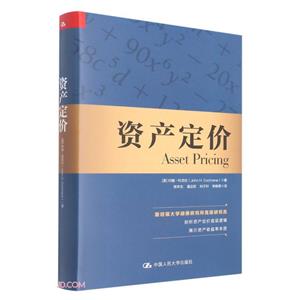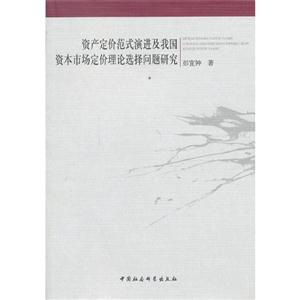
作者:(英)奥特格 著
页数:584
出版社:世界图书出版公司
出版日期:2013
ISBN:9787510050749
电子书格式:pdf/epub/txt
内容简介
the starting point for any analysis in finance involves
assigning a cur-rent price to a future strearfi of uncertain
payoffs.this is the basic notionbehind any asset.pricing model.take
for example,the price of a shareto a competitive firm.since the
share entitles the owner to claims for the future profits of the
firm.a central problem is to assign a value to thesefuture
profits.take another asset-a house.this provides housing ser-vices
in all states of nature and at all dates.consequently,the value of
thehouse today must reflect the value of these future
services。other examplesinclude the pricing of durable goods or
investment projects based on theirfuture expected marginal
products.one approach to monetary economicsalso follows this basic
principle-if money as an asset has value in equilib,rium(in the
absence of any legal restrictions),then this value must reflectthe
stream of services provided by this asset.
our approach is to derive pricing relationships for different
assets byspecilying the economic environment at the outset.ohe of
the earliestexamples of this approach is merton〔342〕.however,merton
does notrelate the technological sources of uncertainty to the
equilibrium prices ofthe riskv assets.aiternatively,he assumes a
given stochastic process for thereturns of different types of
assets and then prices them given assumptionsabout consumer
preferences.consequently,the supply side is not explic.itly
considered by merton.the asset-pricing model of lucas〔317〕is
fullygeneral equilibrium but it is an endowment economy,so that
consumptionand investment decisions are trivial.brock〔76〕develops
an asset.pricingmodel with both the demand and supply side fully
specified and links itup to ross‘s〔369〕arbitrage pricing
model.
in this book,we will start from an explicit economic environment
anddeduce the implications for asset prices,and the form of the
asset-pricingfulnction from the equilibrium in these
environments.to study the prob-lem of asset pricing,we couid also
follow another approach:we couldtake a very general and abstract
approach,vmwlng asset pricing as thevaluation of a future stream of
uncertain payoffs from the asset accord.mg to a general pricing
function.(aiven a minimal set ot assumpnonsabout the set of
payoffs,we could try to characterize the properties ofthis abstract
pricing function.
本书特色
《动态经济用的资产定价》由奥特格所著,本书是一部教科书,书中运用宏观经济和金融分析的整体方法讲述了一般平衡态模型,为学生、学者和决策人员提供了研究大量经济现象的实用工具。其中,提供了学习动态经济模型的一致框架,引入离散时间中金融概念中的关键概念,深入研究了分析动态、随机环境中的各种问题循环方法,建立了消费、产出和投资模型中研究资产配置和分配的方法,概述了商业循环分析和商业循环在货币和国际模型中的应用,囊括了跨际叠代模型中资产定价、借款约束和交易成本的最新研究。每章末都有习题,这些习题可以指导读者更好地学习本科目。
目录
list of figures
list of tables
preface
i basic concepts
1 complete contingent claims
2 arbtrage and asset vauation
3 expected utility
4 capm and apt
5 consumption and saving
ii recursive models
6 dynamic programming
7 intertemporal risk sharing
8 consumption and asset pricing
9 non-separable preferences
10 economies with production
11 investment
12 business cycles
iii monetary and internatl0nal model5
13 models with cash-in-advance constraints
14 international asset markets
iv moqels with market incompleteness
15 asset}3ricing with frictions
16 borrowina constraints
17 overlapping generations models
v supplementaryry material
a mathematical appendix
a.1 stochastic processes
a.2 some useful theorems
bibliography
index















